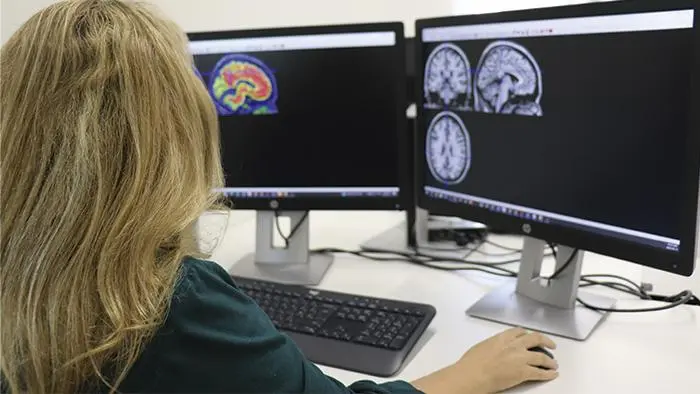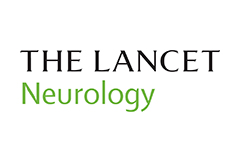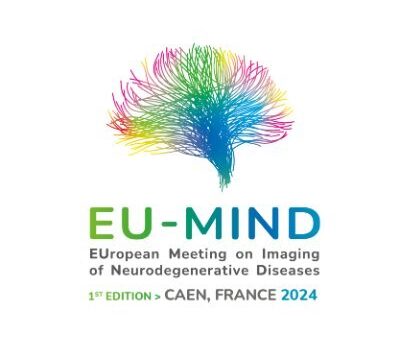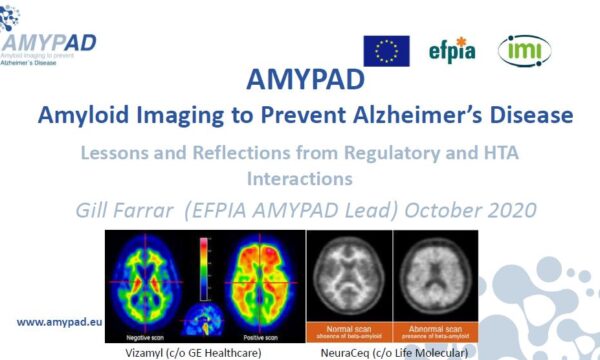The Neuroimaging Research Group of the Barcelonaβeta Brain Research Center (BBRC), the research center of the Pasqual Maragall Foundation, in collaboration with the AMYPAD (Amyloid Imaging to Prevent Alzheimer’s Disease) Consortium, has demonstrated the reliability of the Centiloid metric for measuring amyloid plaques, one of the main hallmarks of Alzheimer’s disease. The work, published in Alzheimer’s and Dementia and conducted across multiple clinical sites, improves diagnostic accuracy, particularly when assessing equivocal cases. The study has provided the basis for the European Medicines Agency (EMA) to consider this scale as a valid and robust biomarker of the accumulation of amyloid protein in the brain.
The BBRC team has played a key role in this evaluation. Dr. Mahnaz Shekari, first author of the publication and researcher at the Neuroimaging Research Group at the the center, explains that “we have demonstrated the precision of the Centiloid metric in memory clinic patients, establishing it as a reliable biomarker for diagnosing and tracking Alzheimer’s disease. Furthermore, we offer a comprehensive, easy-to-follow guideline for using the Centiloid metric in amyloid PET quantification, making it accessible to both clinicians and researchers.”
EMA’s endorsement, a major achievement
The EMA’s Committee for Medicinal Products for Human Use (CHMP) has recognized the Centiloid Unit as a sensitive and robust universal measure for global amyloid load in the brain when used in clinical trials, provided that appropriate quality control procedures are followed. This allows for consistent comparisons of amyloid-PET scans across different tracers and procedures, supporting Alzheimer’s disease clinical trials.
The “Qualification of Novel Methodologies for Medicine Development”, introduced by EMA in 2008, certifies the acceptability of innovative development methods -such as new biomarkers- for a specific use in research, development, or clinical practice. A Qualified Opinion is only issued when the evidence is deemed adequate to support the biomarker’s intended use. The last Qualified Opinon related to Alzheimer’s disease was approved in 2013.
“The resolution issued by EMA’s Committee for Medicinal Products for Human Use is an incredible achievement for the team”, assures Dr. David Vállez, Director of the Neuroimaging Platform of the center and previous data manager and researcher at AMYPAD. “This endorsement validates the reliability and applicability of the Centiloid method in clinical settings, which is key considering developments in clinical trials and the expected arrival of disease-modifying therapies”, he explains.
A universal measure for clinical practice
The results of this study could not only benefit clinicians but also be highly advantageous for people with Alzheimer’s disease undergoing anti-amyloid drug treatments. “The quantitative Centiloid metric improves the diagnostic accuracy, particularly when assessing equivocal cases with intermediate amyloid levels”, explains Dr. Juan Domingo Gispert, scientific collaborator of the BBRC. In these cases, visual assessments can be challenging and vary significantly depending on the reader’s experience. According to the researcher, “the Centiloid scale adds prognostic value, improves the differential diagnosis of the dementias and is the best predictor of the clinical benefit of anti-amyloid therapies.”
With the anticipated rise in anti-amyloid drugs and their broader clinical use, the Centiloid metric will be crucial for evaluating drug efficacy and managing dosing effectively. According to EMA’s Qualified Opinion, “the use of the Centiloid scale can provide a potential baseline measure for future therapy monitoring/follow up scanning”. The full document can be found here.
You can find the original BBRC press release here.



